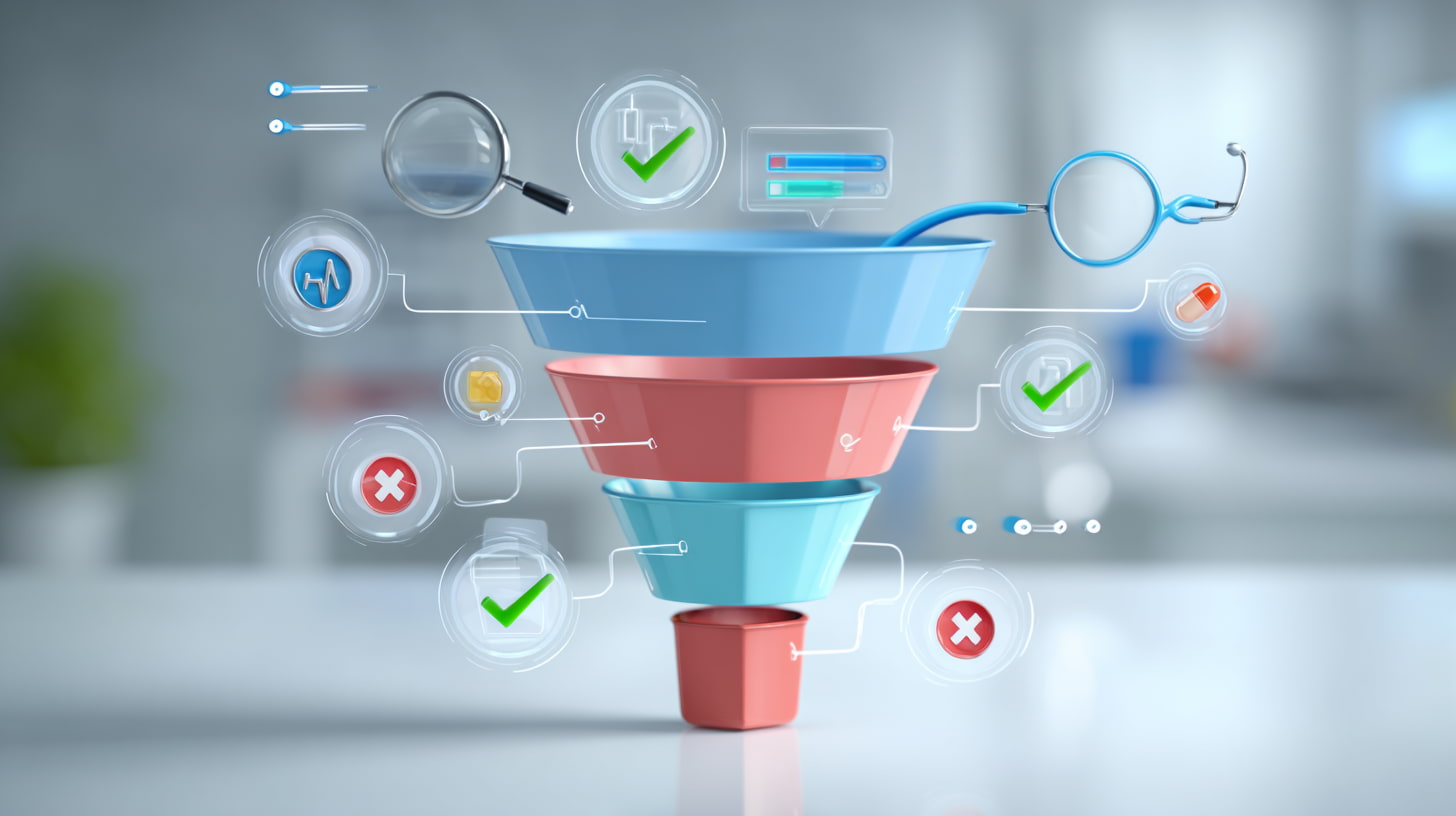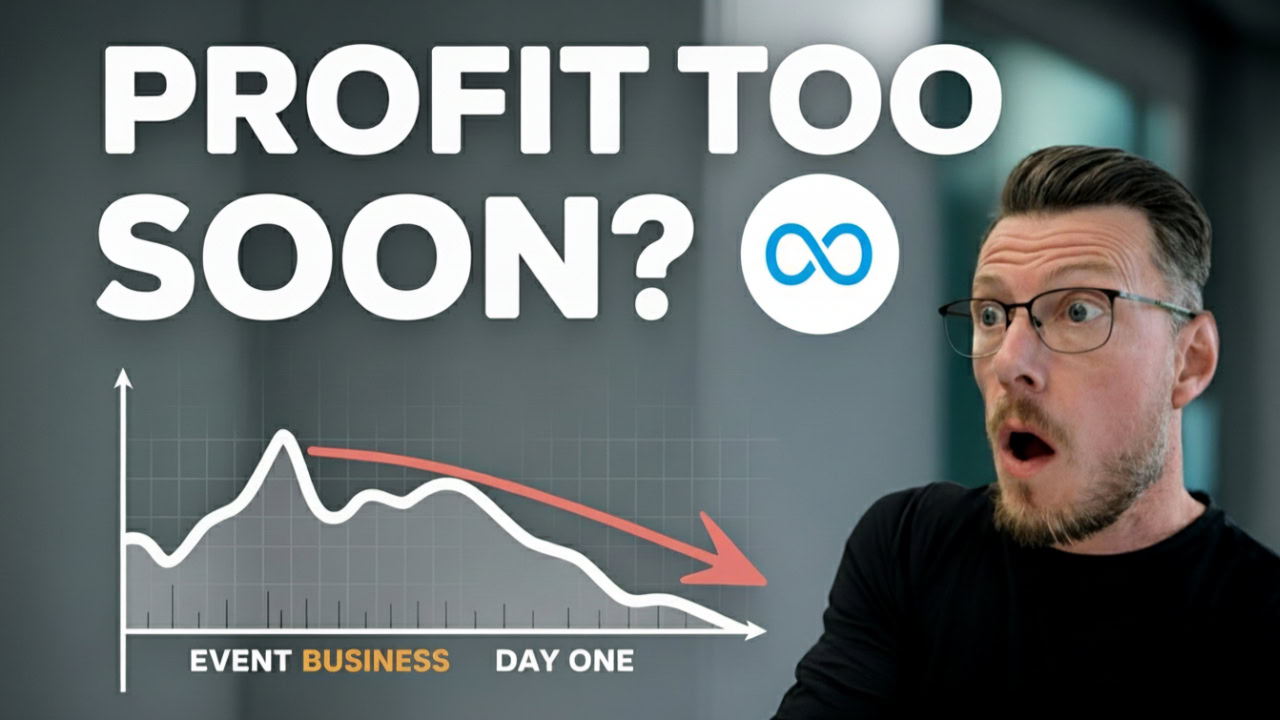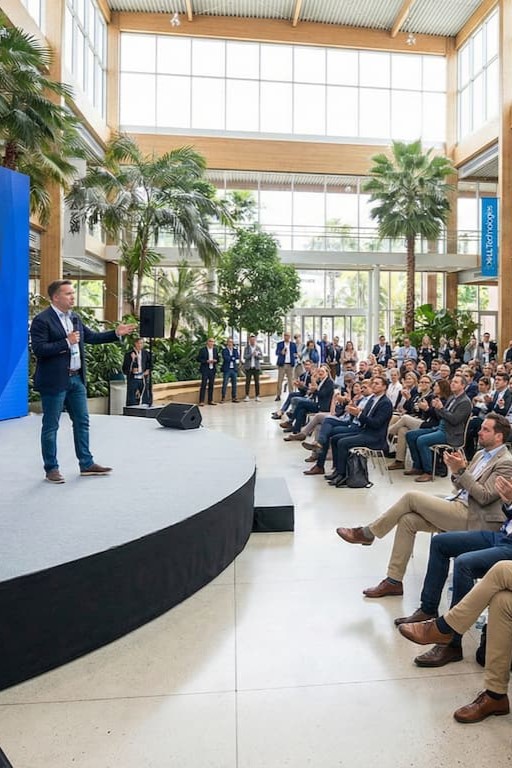Dan Charles
16/09/2025
Table of Contents
Stop panic-killing campaigns that are actually working. Here’s how to diagnose what’s really broken.

Key Takeaways
- Diagnose, don’t panic: Ask “which part is working?” instead of killing entire campaigns when results are mixed
- Traffic light decisions: Green = scale aggressively, Yellow = slow down and fix, Red = kill completely
- Attribution is everything: Without proper tracking, you’re guessing instead of making data-driven decisions
- Scale smart: Test variations of winning concepts across new audiences rather than just throwing more money at the same ad
- Events move fast: Standard “be patient” marketing advice doesn’t work when conference dates and deadlines are fixed
Most event businesses approach marketing campaigns like a light switch – either everything’s on or everything’s off. When results aren’t perfect, they panic and kill everything. When something works, they’re afraid to scale it.
After nearly a decade in the events industry and helping dozens of event businesses escape the feast-or-famine cycle, I’ve learned that both approaches are wrong.
Here’s the reality: 79% of attendees at event marketing campaigns say they are more likely to make a purchase, yet 77% of marketers say events are the most effective marketing channel for their company. Despite this proven effectiveness, most event businesses still struggle with systematic marketing approaches.
The events industry moves fast. Conference dates are fixed, product launches have immovable deadlines, and seasonal booking windows don’t wait for your “patient and consistent” approach to maybe work.
But that doesn’t mean you should panic-kill campaigns at the first sign of trouble.
Here’s the diagnostic framework that actually works for event businesses.
The Problem with Standard Marketing Advice
You’ve heard this before: “Be patient and consistent. Give your campaigns time to work.”
This advice isn’t inherently wrong – it’s just not built for our industry.
While other businesses can afford to wait 90 days to see if their branding campaign eventually drives leads, event businesses operate in a different reality:
- Fixed deadlines: That corporate retreat is happening in Q1 whether you’re ready or not
- Seasonal demand: Conference season doesn’t adjust to your marketing timeline
- Long planning cycles: Clients book events 6-12 months ahead, but marketing windows are often much shorter
- High stakes: When an event fails, the fallout is immediate and public
The standard “be patient” approach can literally cost you opportunities that won’t come around again for another year.
The Diagnostic Approach: Fix vs Kill
Instead of asking “Is this campaign working?” ask “Which part of this campaign is working?“
This single question changes everything.
Here’s the framework:
Step 1: Identify Your Funnel Stages
Every event marketing campaign has predictable stages where things can break:
- Awareness: Are people seeing your ads?
- Interest: Are they clicking through?
- Consideration: Are they engaging with your content?
- Action: Are they converting into leads?
- Follow-through: Are they showing up to calls/meetings?
Step 2: Apply the Traffic Light System
🟢 Green Light: Scale Aggressively
- All metrics performing well
- Clear attribution from campaign to bookings
- Cost per acquisition within acceptable range
Action: Don’t just increase budget on the same ad. Test variations of the winning concept, try new audiences, build campaigns around the same hook.
🟡 Yellow Light: Diagnose and Optimize
- Some metrics good, others bad
- Mixed signals in your data
- Unclear where the breakdown is happening
Action: Slow down spend while you investigate. Don’t kill – fix.
🔴 Red Light: Stop Everything
- All metrics performing poorly
- No positive indicators anywhere in the funnel
- Clear evidence the fundamental approach is wrong
Action: Kill it completely and start over with new creative/messaging.
Step 3: Common Diagnostic Scenarios
Scenario 1: Great clicks, terrible conversions
- Problem: Your ad is working, your landing page isn’t
- Don’t touch: The ad creative and targeting
- Fix: Landing page copy, form placement, page loading speed
- Real example: I’ve seen businesses kill Facebook ads getting 4% CTR because their website took 8 seconds to load
Scenario 2: Poor click-through rates
- Problem: Your messaging doesn’t resonate with your audience
- Don’t touch: The targeting (yet)
- Fix: Ad creative, headlines, hook angles
- Real example: Generic “we plan great events” vs. “stage design for product launches that executives actually remember”
Scenario 3: Good engagement, no inquiries
- Problem: People are interested but not compelled to act
- Don’t touch: The creative concept
- Fix: Call-to-action, offer strength, urgency/scarcity
- Real example: “Contact us” vs. “Get your 2025 venue availability before December bookings close”
The Attribution Challenge
Here’s what most event businesses get wrong: they don’t have proper tracking set up, so they can’t actually diagnose anything.
Without attribution, every campaign decision becomes a guess.
Most event businesses don’t realize that personalization has fundamentally changed how effective marketing attribution works. The days of simple “last-click” attribution are over when dealing with sophisticated B2B buyers who research extensively before making decisions.
Minimum viable tracking for event businesses:
- Google Analytics 4 with proper conversion goals
- Facebook Pixel or LinkedIn Insight Tag on your website
- Call tracking numbers for phone inquiries
- CRM integration that shows campaign source for every lead
- Revenue attribution connecting campaigns to actual bookings
Yes, this takes setup time. Yes, it’s technical. But without it, you’re flying blind and will end up killing campaigns that are actually working.
The truth is, most event companies are measuring success completely wrong – focusing on vanity metrics instead of the data that actually predicts booking success.
When to Scale (And How to Do It Right)
Most event businesses scale wrong. They find one ad that works and just throw more money at the exact same creative until it burns out.
Smart scaling looks different:
The Creative Multiplication Method
When you find a winning concept, create variations:
Original winner: “Stage design for product launches”
Variations to test:
- “Stage design that makes executives look like visionaries”
- “Product launch stages that trending on LinkedIn for weeks”
- “Why 67% of product launches fail (and how stage design prevents it)”
Audience Expansion
Test your winning creative with:
- Lookalike audiences based on your best clients
- Interest expansion (add related interests to your existing targeting)
- Geographic expansion (if you service multiple cities)
- Job title variations (CMOs, Marketing Directors, Event Managers)
Campaign Structure Scaling
Don’t put all your budget in one campaign. Create:
- Different campaign objectives (traffic vs. conversions vs. engagement)
- Platform diversification (LinkedIn + Google + Meta)
- Time-based variations (same ad, different scheduling)
Real Case Study: The £10 to £150 Scale
A few years ago, I was running an event that wasn’t selling tickets despite significant investment in venue, talent, and production.
This was early Facebook ads era – nobody really knew what they were doing yet.
I created almost 100 different ad variations, set the budget to £10/day, then got busy and forgot about it.
A week later, checking ticket sales: “Where are all these coming from?”
One ad was absolutely crushing it. It had this insider reference that only real fans of the artist would understand. All the generic “great event, come out” ads? Crickets.
The diagnostic decision: Instead of increasing budget on all ads, I killed everything except the winner and scaled that single ad to £150/day for the final week.
Result: The event sold out.
The lesson: Test wide, identify what works, kill what doesn’t, scale what connects.
Most people either don’t test at all, or they test but don’t have the discipline to kill the losers and scale the winners.
The Event Industry Difference
Standard marketing advice assumes you have unlimited time to optimize. Event businesses don’t.
When opportunity windows close, they’re closed.
That’s why the diagnostic approach matters so much for our industry:
- Rapid testing to find what works quickly
- Aggressive scaling when you identify winners
- Quick kills when something’s clearly not working
- Attribution clarity so you make decisions based on data, not panic
Your Diagnostic Action Plan
Week 1: Set up proper tracking
- Implement conversion tracking across all platforms
- Set up call tracking numbers
- Connect your CRM to campaign data
Week 2: Audit current campaigns
- Apply the traffic light system to everything running
- Identify which stage of the funnel is breaking down
- Stop spending on clear losers, optimize yellow lights
Week 3: Test systematically
- Create 3-5 variations of any winning concepts
- Test new audiences with proven creative
- Launch new campaigns with clear success metrics
Week 4: Scale winners, kill losers
- Double down on what’s working with creative variations
- Expand successful campaigns to new platforms/audiences
- Completely eliminate anything with no positive indicators
The Bottom Line
Most event businesses fail at marketing because they either give up too early or stick with broken campaigns too long.
The diagnostic approach gives you a framework to make smart decisions quickly – which is exactly what our fast-moving, deadline-driven industry requires.
Stop asking “Is this working?” Start asking “What part of this is working, and what part needs to be fixed?”
Your campaigns – and your booking calendar – will thank you.

Why Your Event Business Doesn’t Need More Martech: It Needs a Coherent Message

Universal Attribution for Event Businesses: Track Every Lead Across Any Form Tool

The 4-Phase Event Marketing Timeline System: From Reactive Panic to Predictable Revenue




